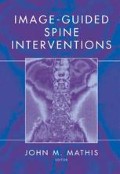Conclusion
Intraspinal drug delivery systems have made the chronic delivery of intrathecal medication a manageable and safe tool in the management of chronic pain due to cancer, as well as other causes. Careful attention to patient selection, screening, drug selection, implantation technique, and refill technique will assure that this modality will be an important adjunct to any pain management clinic.
Additional acceptance and understanding by the lay community is necessary to bring reasonable expectations regarding pain relief with this technique. The best driving force for the acceptance of this technique by third-party payers is informed and expectant patients.
Access this chapter
Tax calculation will be finalised at checkout
Purchases are for personal use only
Preview
Unable to display preview. Download preview PDF.
References
Wang JK, Nauss LA, Thomas JE. Pain relief by intrathecally applied morphine in man. Anesthesiology 50:149–150, 1979.
Yaksh TL. Spinal opiate anesthesia: characteristics and principles of action. Pain 11:293–346, 1981.
Yaksh TL, Rudy TA. Analgesia mediated by a direct spinal action of narcotics. Science 192:1357–1358, 1976.
Yaksh TL, Rudy TA. Narcotic analgesics: CNS sites and mechanisms of action as revealed by direct intradermal injection techniques. Pain 4:299–359, 1978.
Bedder MD, Burchiel K, Larson SA. Cost analysis of two implantable narcotic delivery systems. J Pain Symptom Manage 6:368–373, 1991.
DuPen SL, Williams AR. Management of patients receiving combined epidural morphine and bupivacaine for the treatment of cancer pain. J Pain Symptom Manage 27:15–17, 1992.
Coombs DW, Saunders RL, Baylor MS, et al. Relief of continuous chronic pain by intraspinal narcotics infusion via an implanted reservoir. JAMA 250:2336–2339, 1983.
Poletti CE, Cohen AM, Todd DP, et al. Cancer pain relieved by long-term epidural morphine with permanent indwelling system for self administration. J Neurosurg 55:581–584, 1981.
Brazenor GA. Long-term intrathecal administration of morphine: a comparison of bolus injection via reservoir with continuous infusion by implanted pump. Neurosurgery 21:484–491, 1987.
Muller H, Lueben V, Zierski J, Hempleman G. Long-term spinal opiate treatment. Acta Anaesthesiol Belg 39:83–86, 1988.
Akahoshi MP, Furuike-McLaughlin T, Enriquez NC. Patient controlled analgesia via intrathecal catheter in outpatient oncology patients. J Intravenous Nurs 11:289–292, 1988.
Follett KA, Hitchon PW, Piper J, et al. Response of intractable pain to continuous intrathecal morphine. A retrospective study. Pain 49:21–25, 1992.
Harbaugh RE, Coombs DW, Saunders RL. Implanted continuous epidural morphine infusion system. J Neurosurg 56:803–806, 1982.
Krames ES, Gershow J, Glassberg A, et al. Continuous infusion of spinally administered narcotics for the relief of pain due to malignant disorders. Cancer 56:696–902, 1985.
Onofrio BM, Yaksh TL. Continuous low dose intrathecal morphine administration in the treatment of chronic pain of malignant origin. Mayo Clin Proc 56:516–520, 1981.
Onofrio BM, Yaksh TL. Long term pain relief produced by intrathecal infusion in 53 patients. J Neurosurg 72:200–209, 1990.
Paice JA, Penn RD, Shortt S. Intraspinal morphine for chronic pain: a retrospective multicenter study. J Pain Symptom Manage 11:71–80, 1996.
Shetter AG, Hadley MN, Wilkinson E. Administration of intraspinal morphine sulfate for the treatment of intractable cancer pain. Neurosurgery 18:740–747, 1989.
Krames ES, Olson K. Clinical realities and economic considerations: patient selection in intrathecal therapy. J Pain Symptom Manage 14(suppl): S2–S13, 1997.
Hassenbusch SJ, Stanton-Hicks M, Covington SC. Long-term intraspinal infusions of opioids in the treatment of neuropathic pain. J Pain Symptom Manage 10:527–543, 1995.
Portenoy RK, Foley KM. Chronic use of opioid analgesics in non-malignant pain: report of 38 cases. Pain 25:171–186, 1986.
Olson K. An Approach to Psychological Assessment of Chronic Pain Patients. Minneapolis, MN: NCS Assessments; 1992.
Doleys DM. Psychological assessment for implantable therapies. Pain Digest 10:16–23, 2000.
Staats PS, Mitchell VM. Future directions for intrathecal analgesia. Prog Anesthesiol 19:367–382, 1997.
Turner JA, Loeser JD. The importance of placebo effects in pain treatment and research. JAMA 221:1609–1614, 1994.
Tyler DB. The influence of a placebo and medication on motion sickness. Am J Physiol 146:458–466, 1946.
Liberman R. An experimental study of the placebo response under three different situations of pain. J Psychiatr Res 2:233–246, 1964.
Staats PS, Hekmat H, Staats A. Suggestion/placebo effects on pain: negative as well as positive. J Pain Symptom Manage 15:235–243, 1998.
Staats PS. Implications of the placebo response for interventional pain specialists. Neuromodulation (in press).
Krames ES. Intraspinal opioid therapy for chronic nonmalignant pain: current practice and clinical guidelines. J Pain Symptom Manage 11:333–352, 1996.
Krames ES. Intrathecal infusion therapies for intractable pain: patient management guidelines. J Pain Symptom Manage 8:36–46, 1993.
Eriksen K, Bigler D, Jensen NH, et al. Langtidsbehandling med morfin intratekalt ved svaere cancers merteilstande. Ugeskr Laeger 151:2365–2366, 1989.
Hassenbusch SJ, Pillay PK, Magdinec M, et al. Constant infusion of morphine for intractable cancer pain using an implanted pump. J Neurosurg 73:405–409, 1990.
Winkelmuller M, Winkelmuller W. Long-term effects of continuous intrathecal opioid treatment in chronic pain of non-malignant etiology. J Neurosurg 85:458–467, 1996.
Zenz M, Strumpf M, Tryba M. Long-term oral opioid therapy in patients with chronic nonmalignant pain. J Pain Symptom Manage 7:69–77, 1992.
Editor information
Editors and Affiliations
Rights and permissions
Copyright information
© 2004 Springer-Verlag New York, Inc.
About this chapter
Cite this chapter
Oakley, J.C. (2004). Implanted Drug Delivery Systems. In: Johnson, B.A., Staats, P.S., Wetzel, F.T., Mathis, J.M. (eds) Image-Guided Spine Interventions. Springer, New York, NY. https://doi.org/10.1007/0-387-21794-0_15
Download citation
DOI: https://doi.org/10.1007/0-387-21794-0_15
Publisher Name: Springer, New York, NY
Print ISBN: 978-0-387-40320-5
Online ISBN: 978-0-387-21794-9
eBook Packages: Springer Book Archive

